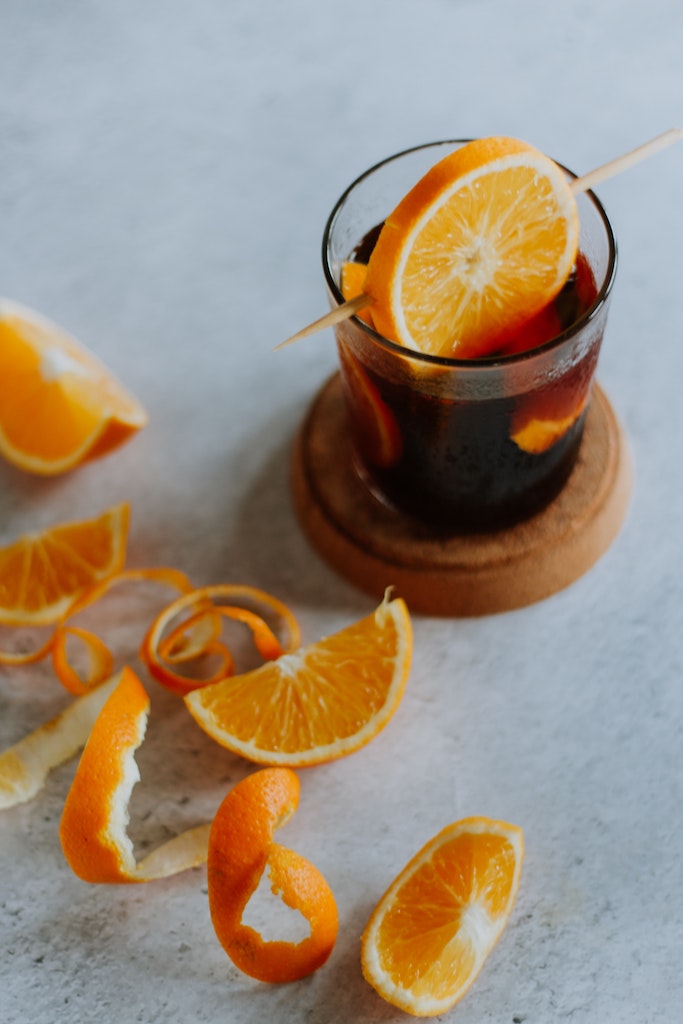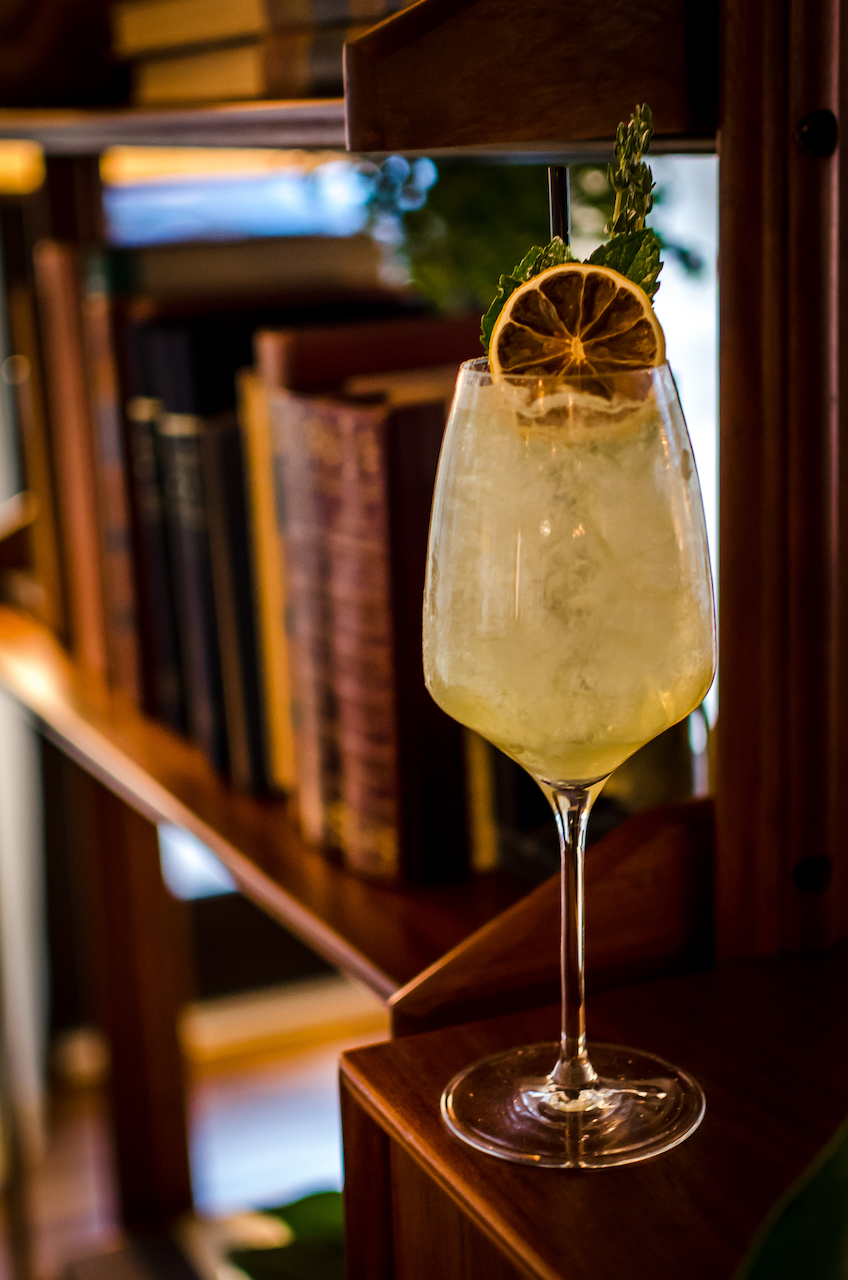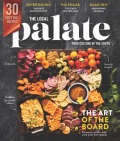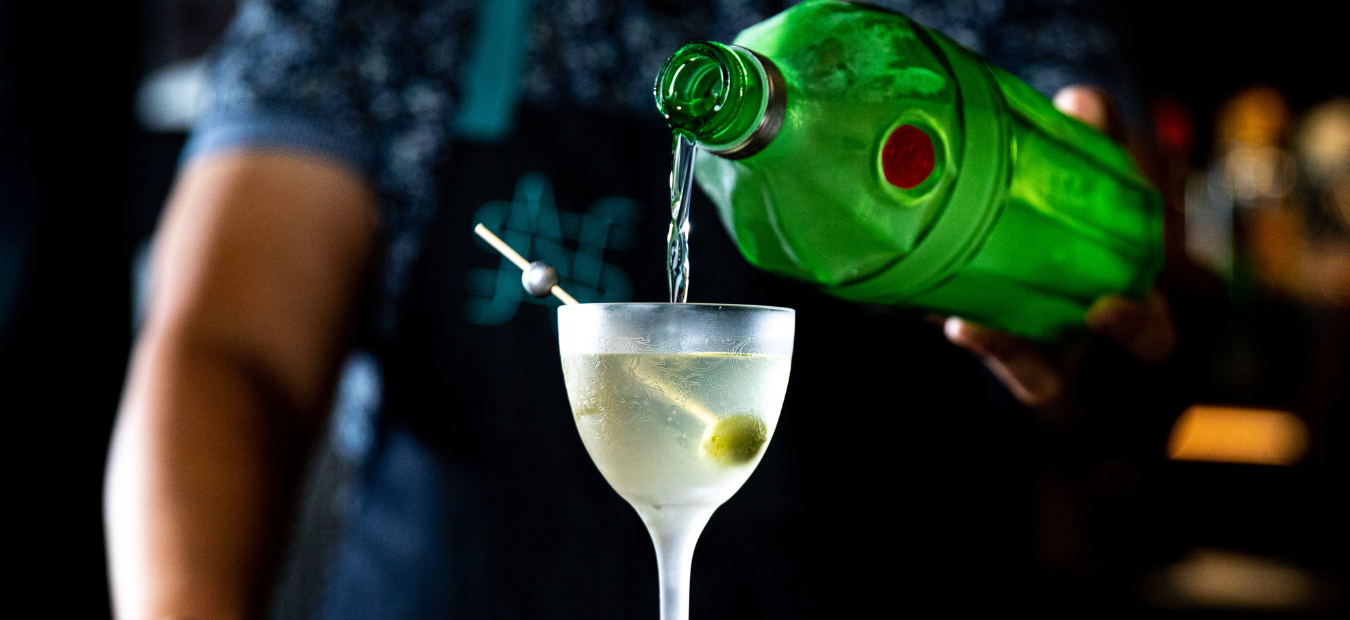Martinis, riffs on the manhattan, the growing demand for low-ABV drinks—the common denominator the latest beverage trends share is fortified wine. Traditionally speaking, fortified wine is wine with a spirit (oftentimes brandy) added to it. The centuries-old practice originated in Europe, where fortifying wines like sherry, port, madeira, and vermouth better preserved them for shipping. These wines have long been relegated to after-dinner drinks and cooking ingredients; however, they’re also the secret darlings of many beverage professionals. They lend acidity in cocktails, and they’re also less boozy than most spirits, making them a key ingredient for a spritz or highball that can go the distance.
Typically, fortified wines aren’t readily produced outside of Europe. But in Houston, Morgan Weber, the beverage manager and co-owner of Agricole Hospitality, is a regional expert in the spirit. He even crafted a proprietary amber vermouth specifically for the group’s restaurant Coltivare. To learn a bit more about the utility of this underrated wine and its growing popularity, TLP caught up with Weber and Coltivare’s general manager, sommelier Leonora Varvoutis.


The Juice on Fortified Wine
What sort of role do fortified wines play in most consumers’ lives that they may not even be aware of?
Fortified products are all over the culinary and beverage world and have been for hundreds of years. We can confidently say that competitive and culinary-driven restaurants, much like Coltivare, will have cocktail programs that build in fortified products. Any of those Manhattan riffs will rely on them, this new martini movement that’s resurging in consumers relies on vermouths, and bartenders definitely like to play with fortified wines for the nuances they add in drinks. And, obviously, food items will have them snuck in from time to time—think sherry and sherry vinegars, especially!
They offer acidity, depth of flavor, and a way to either alter an ABV in mixed drinks or offer lower ABV options when letting the product itself shine in cocktails. They’ve been used in cooking for ages, too—either in an unadulterated form like sherry vinegars or in deglazing and fortifying methods (even if the alcohol is eventually cooked off).

Why are people increasingly opting for fortified wines? How are they drinking them?
Beverage professionals are leaning more and more into this fortified movement as a way to knock the edge off higher alcohol spirits. Our John William Hermes’ Fixed Manhattan is a great example of this theory. We have a drink that is literally 100-percent alcohol (no sugars, no juices, no waters added), and we need to cut into the heat of the rye whiskey we use. Rye is floral, spicy, robust, and it is often overpowering. And while our build is not that of a classic manhattan, we still rely heavily on a fortified product called Carpano Antica to cut through the rye (in balance with some beautiful Amari).
It’s interesting to see people coming back into this martini phase—it’s like the 90s are back! A big part of the classic martini is vermouth. So, though consumers may not even recognize the fact that they are willingly ordering vermouth, this fortified product plays a big part in what we serve people on a daily basis.
What’s the scene like for people producing fortified wines in the United States?
This question was tricky. There is virtually no vermouth production presence in the US. And it’s kind of perpetuated to this day because of the average American consumer: Americans drink to drink, and in the Old World, where these fortified products (and most other alcohols) were created, people drink to eat. In so many other countries, it’s about producing and pairing alcohol products with what is grown and made around them. Not so in America, for the most part, at least.
The only way to get quality, purpose-driven American vermouth is to spend money on small, independent producers. It’s why we love Matthiasson’s Sweet Vermouth. You can drink it by itself, and it is insanely delicious. Matthiasson grows grapes that do well in their climate. They produce so many cool bottles in every form and fashion, and you should seek them out immediately, in our opinion.
Do you have any recommendations for folks interested in exploring fortified wines?

Every day, inexpensive, grab-off-some-shelf-even-though-you-don’t-know-what-it-is vermouths aren’t going to be great. So, stay away from them. Don’t buy from those big guys, and definitely do not consume them on their own.
Instead, go to your local boutique liquor store. If you’re in Houston, go to Houston Wine Merchant. Immediately. If you’re overwhelmed with seeking out a full bottle to purchase, go to your local trusted bartender. Especially in a restaurant of some consequence. You can try little tastes with a bartender you trust. Get to know the flavor profiles of these products, the proofs, the sweetness, the viscosity. And then, get a drink with one the one you like! We can promise it’s incredibly fun for us, and we’d want it to be just as fun for you.
What are some dos or don’ts that you’d recommend for a fortified wine drinker at home?
Pairing wine with food comes from the super Old-World theory of “what grows together, goes together.” It definitely isn’t just for wine. Blanc vermouth topped with sparkling water and garnished with an orange or lemon peel in the summer is just incredible. Take that drink and pair it with some simply dressed Mediterranean fish—that’s exactly how a cocktail like the vermouth spritz was created!
Stay away from the classic dry vermouth “mixers.” Opt for smaller producers and do some research on fortified wines that can be consumed on their own. A lot of them even make teeny bottles for purchase, which is kind of cool.
And when you find something you like, roll with it! Put it in drinks, try it cold, try it room temperature, cook with it, look for recipes with it, share it with friends, spread the word, and enlighten other people with your newfound love!
This interview has been condensed and edited.
share
recently published
-
One Night at Duck Camp
by TLP Editors -
The Local Palate’s Tour of Tucker | Video
by Maggie Ward -
The Swordfish Sea Change
by Emily Havener -
Summer’s Top Culinary Trends
-
Top 15 Restaurants Near the Atlanta Airport
by TLP's Partners
more from In the Field
-
One Night at Duck Camp
-
The Local Palate’s Tour of Tucker | Video
-
Curating Joy at COLA
-
Seeds of Change | Listen
-
Peak to Peak at Dalaya Thai









